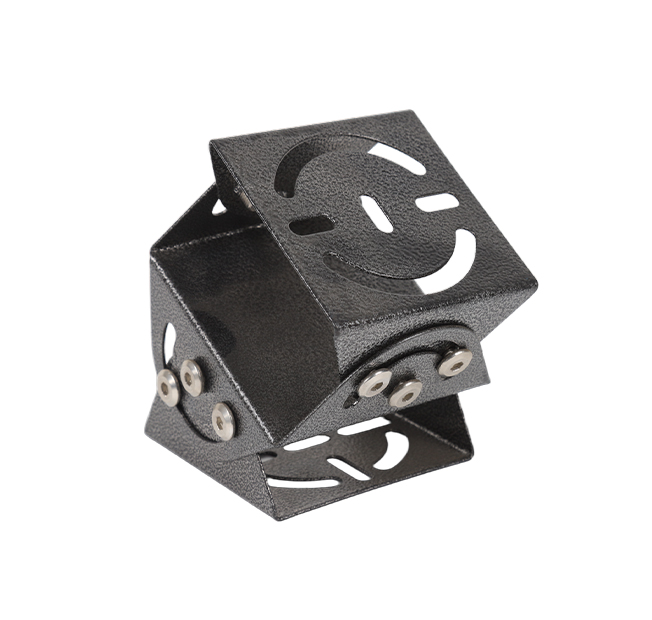Time:2025-11-04 Views:0 source:CNC Machining customization source:CNC Machining news

Stamping parts produced via turret punch press automation represent a high-efficiency, precision-focused manufacturing solution, widely adopted in industries like electronics, automotive, and sheet metal fabrication. A turret punch press is equipped with a rotating turret (a cylindrical tool holder) that houses multiple punches and dies (typically 10–60 tools), enabling quick tool changes for diverse stamping operations—such as punching holes, forming slots, or creating embossments. Automation elevates this equipment by integrating robotic load/unload systems, CNC (Computer Numerical Control) programming, and real-time production monitoring, transforming manual or semi-automated processes into 24/7 high-volume production lines.
The core advantage of turret punch press automation lies in its speed and flexibility. Automated systems can handle sheet metal blanks (ranging from 0.5mm to 6mm thick) with precision positioning (±0.01mm), thanks to servo-driven feed mechanisms that move the material across the press bed. For example, an automated turret punch press can produce 500–2000 stamping parts per hour (depending on part complexity)—a 3–5x increase compared to manual operation. The rotating turret allows tool changes in 0.5–2 seconds, enabling seamless switching between operations (e.g., punching a 5mm hole followed by a 10mm slot) without stopping production. This flexibility is ideal for manufacturing mixed batches of stamping parts, such as custom electrical enclosures with varying hole patterns.
Automation also enhances consistency and reduces errors. CNC programming eliminates human variation, ensuring every stamping part adheres to design specifications—reject rates often drop to below 0.1%. Robotic load/unload systems (equipped with vacuum or mechanical grippers) handle sheet metal safely, reducing workplace injuries and minimizing material damage. Additionally, integrated sensors monitor tool wear, material thickness, and press pressure in real time, alerting operators to issues like dull punches or misaligned dies before they affect part quality.
For high-volume production, turret punch press automation offers significant cost savings. Reduced labor requirements, faster cycle times, and lower reject rates translate to a lower cost per part—critical for industries like automotive, where millions of small stamping parts (e.g., bracket clips, washer components) are needed annually. With its blend of speed, precision, and flexibility, automated turret punch press technology is a cornerstone of modern stamping parts manufacturing.
Read recommendations:
Sealing ring Precision electronic parts
Housing components for recessed downlights Precision electronic parts
Oval Magnetic Hardware Precision electronic parts
CNC Machining Dimension Accuracy
CNC processing factory - Meeting customers' strict requirements for precision